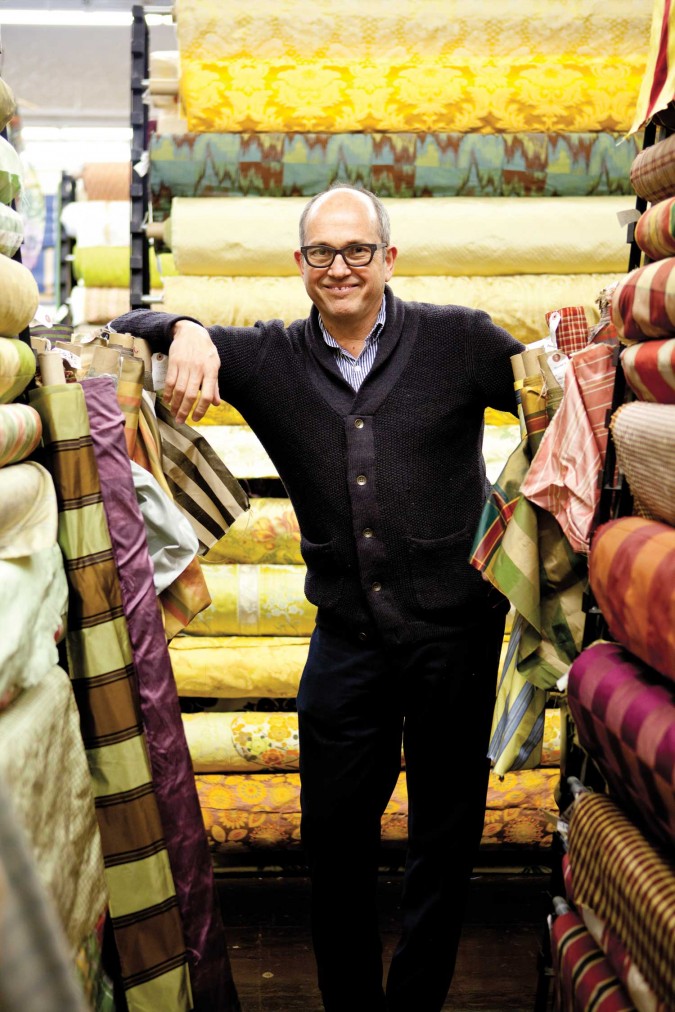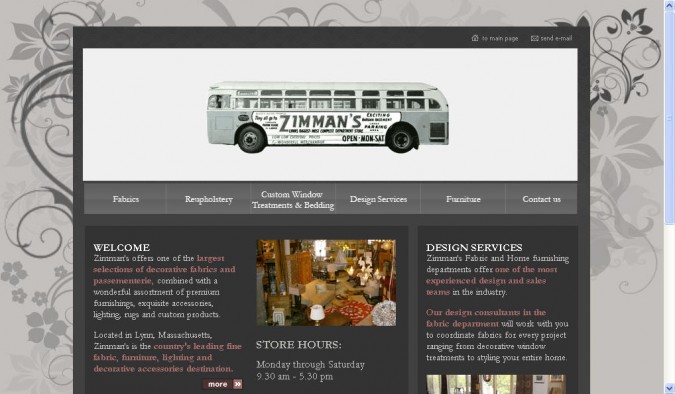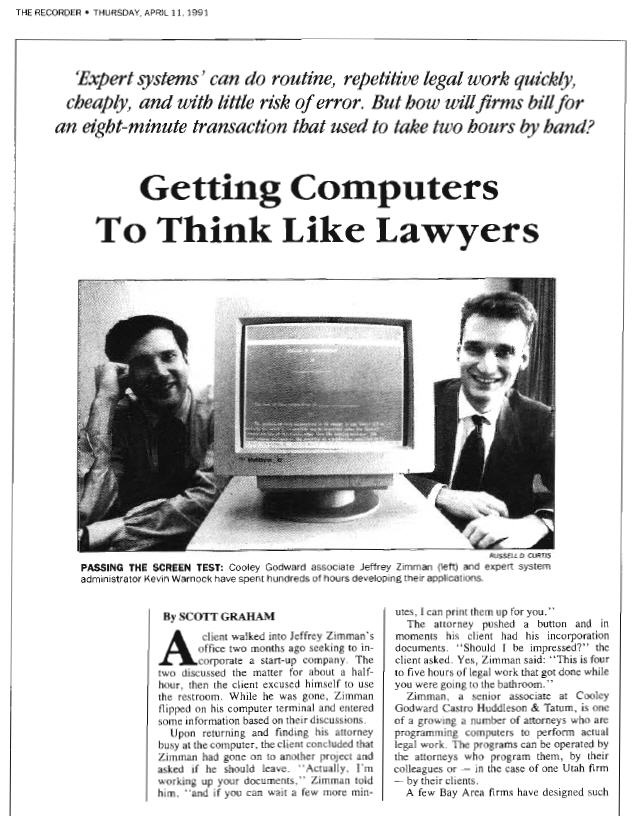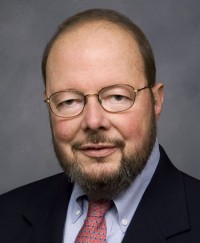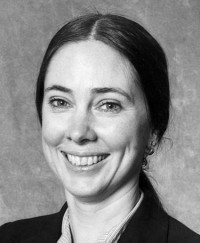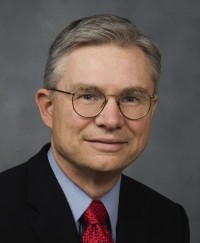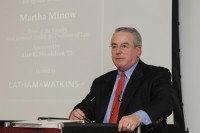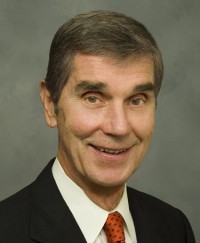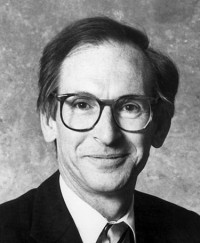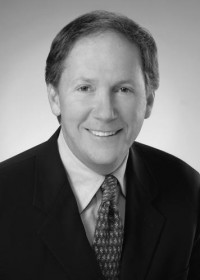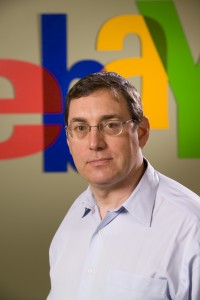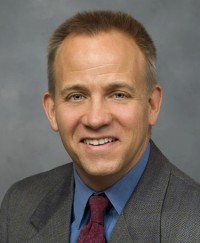Archive for the ‘Hank Barry’ tag
Zimman’s sells sumptuous fabrics at fair prices

Fabric for sale at Zimman's of Lynn, Massachusetts, USA. Picture from http://nshoremag.com/zimmans-of-lynn/
The last time I worked for others, I worked for Jeff Zimman, Susan Philpot and Hank Barry.
I was at Cooley, LLP, a powerhouse law firm in Silicon Valley.
Zimman chaired the Document Automation Committee at Cooley, the entity to which I reported in my role as Computer Aided Lawyering Project Leader.
Jeff Zimman is currently the Chair of Posit Science, Inc., which produces software to help build and maintain cognitive function. Listeners to KQED public radio in the San Francisco Bay Area, where I live, are familiar with Posit Science because this software is always one of the gifts one may select if one becomes a financial sponsor of that radio station. I love KQED, by the way, and I listen to it almost every day. You may sponsor KQED online at this link.
Even though I have known Zimman for a majority of my professional life, I know little about him as a person. I know the basics – that he’s married to architect Ken Ruebush, the brother of my friend Susan Ruebush. I know Jeff Zimman used to be an investment banker at Lazard before co-founding Posit Science. I know Jeff Zimman used to be a newspaper reporter before he went to law school.
Thanks to Facebook, a currently well known social networking website based in Silicon Valley, I now know something new about Jeff Zimman.
Jeff Zimman’s grandfather Morris Zimman 103 years ago founded a treasure of a retail store named Zimman’s. This store is so lush, sumptuous and glorious that articles have been written about it. Gushing articles so colorful that they make one want to make a special trip to Zimman’s just wander the isles and touch the products.
What does Zimman’s sell? Here’s how their website explains it:
“Zimman’s offers one of the largest selections of decorative fabrics and passementerie, combined with a wonderful assortment of premium furnishings, exquisite accessories, lighting, rugs and custom products.
Located in Lynn, Massachusetts, Zimman’s is the country’s leading fine fabric, furniture, lighting and decorative accessories destination.”
Before today, I had never heard the word passementerie. This is what WikipediA has to say initially about passementerie:
“Passementerie or passementarie is the art of making elaborate trimmings or edgings (in French, passements) of applied braid, gold or silver cord, embroidery, colored silk, or beads for clothing or furnishings.
Styles of passementerie include the tassel, fringes (applied, as opposed to integral), ornamental cords, galloons, pompons, rosettes, and gimps as other forms. Tassels, pompons, and rosettes are point ornaments, and the others are linear ornaments.”
Zimman’s sells fabric.
Perhaps the nicest fabric I have ever seen — have a look at the photograph above.
The only store I can compare it to in the Bay Area is Britex Fabrics. But Britex is a premium priced emporium located in costly Union Square retail space. Prices at Britex are sky high such that it’s a turnoff to even browse.
Zimman’s by choice is located next to a 99-cent discount store, so their rent is affordable. The savings are passed on to customers, which results in Zimman’s being both affordable and magical at the same time.
It’s as if Neiman Marcus moved into a Costco and reused the same shelving to sells its luxury goods. Prices could drop dramatically if they didn’t have to support the exceptionally luxurious stores that they’re famous for.
Here’s what Michael Zimman, Jeff Zimman’s brother, has to say about the store he now rus:
“It’s an unlikely spot for this type of business to evolve,” agrees owner Michael Zimman, grandson of the store’s founder, Morris Zimman. “But it works for us. You need a lot of space, which we have, and we’ve been doing it for 103 years, so we’ve developed a broad reputation.”
“With arguably the largest selection of textiles on the East Coast, if not in the country, and a carefully curated array of furniture and decorative items, Zimman’s has become a destination business, surviving the changing landscape of retail by smart specialization and unbeatable prices.
Stepping into Zimman’s can be a daunting proposition. With about 40,000 square feet—nearly an acre—of shopping spread over three floors, some customers, especially those seeking textiles, may not know where to start. After all, Zimman’s has at least 25,000 bolts of fabric in house—but who’s counting? “It might be 50,000. It might be 100,000. We don’t stop to count,” Michael Zimman says. “But that’s part of what makes us unique. We’re for people who want to step back into the way things were and have an experience of shopping in an emporium, putting their hands on textiles and furniture… It’s a throwback, and people really love it.””
I do wonder after reading Coffey’s article if Jeff Zimman also spent a lot of time at Zimman’s while he was growing up, like his brother Michael did. Coffey writes:
“Zimman’s dedication to the old ways has deep roots; Michael learned the business at his grandfather Morris Zimman’s knee. Morris opened the store in 1909, and Michael says he cannot remember a time when he wasn’t involved in the business. In fact, if he wanted to see his father, who worked from 10 a.m. until 10 p.m. six days a week, he had to go to the store. While in the second grade, Michael would take the bus from the family’s home in Marblehead to swim at the Boys’ Club on Lynn Commons. After swimming, Zimman would wend his way through back alleys and residential neighborhoods in the waning afternoon light to get to his father’s store for a ride home.”
It is highly unusual for a lawyer to found a company. Jeff Zimman is certainly an entrepreneur. Posit Science is not an easy kind of company to start. They raised tens of millions of dollars in venture capital. They have world renowned scientists like Michael M. Merzenich, PhD on the team (see Merzenich’s extensive WikiPediA entry here). What Jeff Zimman has accomplished makes my head spin compared to what I have done in the software field.
I suspect that it is extremely likely that Jeff Zimman was profoundly influenced by his grandfather Morris Zimman, the founder of Zimman’s. Watching his grandfather build and operate a successful business had to help inspire him to leave the relative tranquility of lawyering and banking to become a startup founder. I run into Zimman only about yearly, but I will ask him about this connection the next time I see him.
Finally, a fun fact near to my heart — Zimman’s used to advertise on the sides of city transit buses. There is an animated graphic that plays as soon as you arrive at the Zimman’s website that shows the bus ‘driving’ from right to left across the top of the website. I was able to capture the bus in a screen shot after a few tries with Snag It screen capture software. Here is the result. As my readers know, I am a huge fan of buses, and I own a bus even larger than the one below, although now it’s a motorhome.
It was 20 years ago today that I got my picture in The Recorder while I worked at Cooley LLP
Twenty years ago today I was working on Cooley LLP’s document assembly software development effort.
On this day April 11th in 1991, the project was featured in a lengthy article in The Recorder, a San Francisco newspaper for the legal profession. Here’s the PDF scan I made from the paper copy of the article I’ve saved for the last two decades: Getting Computers To Think Like Lawyers – The Recorder – April 11, 1991.
That was a big day for me, as non lawyers at law firms almost never receive any attention from the press. It was also a big day for my project because Kenn Guernsey, Cooley’s Managing Partner at the time, left Jeff Zimman and me a nice voicemail congratulating us for our work. Zimman was the attorney that got the project off the ground by personally programming Cooley’s first document set, and without him, I wouldn’t have likely started Hotpaper.com, Inc. or later created the first online office suite, gOffice. Hotpaper was the first online document assembly application. The application was live on the Internet in 1997, two years before I changed the name of the company from Document Automation Systems LLC to Hotpaper.com, Inc. I licensed this online document assembly software to 30 of the Fortune 500, which I was proud of given my company at the time consisted of just me.
I run into Zimman on the San Francisco MUNI every year or so. He made partner at Cooley in six years I believe, and later became an investment banker at Lazard Ltd. Now he is Chair of Posit Science, which makes computer software that helps improve mental functions. It’s really interesting to me that we both became entrepreneurs after our stints at Cooley.
I credit Cooley with teaching me to be an entrepreneur, because starting such an innovative project inside a law firm is VERY difficult. The computer department isn’t normally charged with embedding the expertise of lawyers into software, so they don’t really know the lawyers. I got to know the lawyers because I needed to get the software to mimic lawyers. I spent a lot of energy hounding the lawyers with questions that must have seemed so simple to them. Zimman was a quick learner, and didn’t need much of my help to build the document models. But Zimman had to return to his lawyer duties after creating a few sets of documents, so I had to personally recruit new lawyers to get involved. I got help from some of the top lawyers at the firm at the time, including Hank Barry, who would later testify before the United States Senate when he was the Interim CEO at Napster.com at the height of its notoriety. Alan Mendelson, Paul Renne, Tony Gilbert, Lee Benton, Dan Frank and Susan Philpot were also instrumental to getting the project as far along as we did. I couldn’t find Dan Frank on the Cooley website so I’m not sure where he works now.
Perhaps the most actively helpful contributor to answering my many legal questions was Eric Jensen. He was a young hotshot associate at the time. I think Eric started at Cooley in 1988. I started at Cooley in 1989. Jensen would return my phone calls in 30 minutes. This was astonishing, as he was working like crazy in Cooley’s Sand Hill Road office with super lawyers Mark Tanoury and Craig Dauchy. Other lawyers that answered my questions, like Michael Jacobson, would often take days or weeks to return my calls, but Jensen usually got back to me in 30 minutes. We became good friends, and I fondly recall working with him. I would even go to the Sand Hill Road office on occasion to meet in person with Jensen. Jacobson was an outstanding question answerer by the way, and he went on to strike it rich as the top lawyer at EBay. He wrote me an enthusiastic letter of recommendation when I left Cooley.
When Cooley eliminated my position of project leader for its document assembly efforts during the recession of 1994 I was devastated. The whole project quickly died and the lawyers had to stop using the time saving software, which could allow an attorney to complete 4 hours of work in 20 minutes. The reason the software couldn’t be used indefinitely is the text of the documents in law firms is constantly being improved. So to keep a document assembly system useful, someone needs to apply those language updates to the software. Once I was gone, there was nobody to implement these upgrades, so the system couldn’t be trusted to produce the firm’s latest thinking. At the time Cooley’s attorneys and staff all used a Digital Equipment Corporation VAX minicomputer cluster via dumb terminals, and the document assembly software ran under the Open VMS operating system used on the VAX. So it was not a simple matter to train someone to take over the text update maintenance of the system.
New applications were out of the question, because without an ‘intrapreneur’ to recruit and encourage attorney experts to turn over their expert knowledge, they would not do it. At the time, the computer staff were housed alone with the accounting staff in a building blocks from where the attorneys worked, so there was no opportunity for the computer staff to get to know or make friends with the lawyers.
I feel bad that my project died, but I consider it one of the luckiest breaks of my life that my position was eliminated.
Otherwise, I might never have become an entrepreneur, and my life would not have been as exciting as it’s been. It was tough on me when Cooley’s Executive Director Ken Sargent (anyone know where he is these days?) broke the bad news and helped me pack my things, but it was a highlight of my professional life. The attorneys I helped felt bad for me that I had worked so hard and then lost my job, so they helped me get started in my own business by finding me my first client and effectively vouching for me. That client, Silicon Valley Bank, paid me $30,000 and got me off to the races. My next client was Bank of America.
It’s funny to recall that one of the young associate attorneys down the hall from me advised me to sue Cooley for letting me go!
I didn’t even consider suing Cooley. Instead, I kept my head high, didn’t complain or vent to anybody beyond my closest friends, and did my best to stay on excellent terms with everyone there, non attorney staff included. Cooley paid me a nice severance package. Had I sued and somehow gotten a few extra dollars, I am 100% certain those dollars would have been ‘nothing’ compared to the value of their help in getting me established in business. In 1999 when I raised $2 million in venture capital from Blue Run Ventures, I was able to get Jensen to represent Hotpaper. His representation was key to the modest success I had with Hotpaper, and to the modest exit for $10 million 14 months later. What some readers may not know is that in 1999 is was nearly impossible to hire a good lawyer. Lawyers needed to be won over via pitching back then, and they were very selective in taking new clients. Getting a firm as impressive as Cooley was difficult, even if you did raise venture capital money. Getting a lawyer like Jensen was nearly impossible. Had I sued Cooley, I would not have gotten them to later represent me, and who knows what would have happened. I am very much against suing in general, as it doesn’t help most of the time.
My advice is to never sue your employer if they eliminate your position! I didn’t have any basis to sue anyway, as they didn’t do anything illegal. It’s illustrative to note that the attorney at Cooley who advised me to sue never made partner and is no longer there.
It’s so much better to leave nicely and stay friends.
It’s a very small world, and the people you know today you will likely still know 20 years from now. I can’t believe how fast 20 years just flew by.
I’ve stayed in touch with my attorney friends from Cooley, and Eric Jensen has been my attorney since 1999. He now leads Cooley’s business department, which accounts for a majority of the firm’s revenue, to my knowledge. Although Jensen wouldn’t say so, he’s what I consider to be one of the best attorneys in the United States. I’m grateful he continues to work with me, as my company must be one of his smallest clients. I have sent my friends to Jensen, including Priya Haji who started World of Good, Inc. which she later sold to EBay and Charity USA, and Andrew McCraith, who started and raised $15+ million in venture capital for Silicon Clocks, which was later acquired by Silicon Labs.
I have received glowing reports from everyone I’ve referred to Jensen.
On this 20th anniversary, I want to thank everyone I’ve ever known at Cooley, including Ben Studebaker who hired me in 1989 and the late Helen Gaffney who promoted me about 6 weeks after I arrived into a position that allowed me the freedom to become an intrapreneur and work on Cooley’s document assembly project. I only knew Studebaker for a matter of 6 weeks or so. I worked very hard during those first six weeks, one night staying several hours past my quitting time to finish a large project assigned to Gaffney by Susan Philpot. I got it done the day it was assigned and it was on Studebaker’s desk when he arrived in the morning. Philpot was and probably still is a feared partner at Cooley, and I’m sure Gaffney and Studebaker appreciated my quick work. I never mentioned I stayed overtime, and I never charged Cooley for the extra effort. But I think it had something to do with Studebaker offering me his job, which included supervising the spending of $500,000 per year, after about 6 weeks on the job. He had been at Cooley for a long time – at least 10 years I recall. He cashed out some of his retirement plan to attend Harvard Divinity School, where he had been accepted. He didn’t seem the type for either divinity school or Harvard. He did seem like he would make an outstanding religious leader, however, as he had an immensely likable personality and was very well thought of at Cooley. I certainly admired his conviction and risk taking. I wonder what became of him, and if he should find this post I hope that he will write to me and fill me in on how his life turned out. Thank you Ben, for you changed my life.
I want to remember my friend Sandy Price, perhaps the first attorney I met and talked with at Cooley. I had only been there a couple of days and I was there late and needed to make a photocopy. I didn’t have an access code yet, and I had to ask Price to activate the photocopy machine for me using her Equitrac accounting device code. Price worked really late almost every night… near midnight lots of nights. I’m still friends with her, and had lunch with her earlier this year. Her hard work paid off, as she’s been named a Super Lawyer every year since 2004. Price is now a partner with Sideman and Bancroft LLP, and if you need an estate planning attorney, I doubt you could find a better lawyer to help you.
I also want to remember my friend James Pirie, who reported to me for a while and who graciously agreed to handle some of my responsibilities so I could work harder on the document assembly project. He put himself at some risk by doing this. He never got in any real trouble though, to my knowledge, and Ken Sargent, the Executive Director, privately congratulated me for delegating what I could to Pirie, saying it was the only way to ‘get things done.’ I trained Pirie to do things he would have never normally learned in his job at the time, and I had complete faith in his ability to safely handle these sensitive computer tasks.
I also want to thank Bill Bradshaw, who handled purchasing of supplies for the San Francisco office. He was an extremely patient friend, and although I’ve lost touch with him, I fondly remember our friendship.
I want to acknowledge Carole Hearn, Cooley’s Director of Finance. I think she’s been there some three decades now. She spent hours educating me about office politics, trying very hard to help me navigate a path that was obscure to a bright eyed 25 year old who had never worked in a law office before. I hear from Hearn every so often, and the last time I saw her in person, about 10 years ago, she gave me a big hug.
I also want to thank Susan Newberry, then the Administrator for the San Francisco office. She’s still at Cooley, with more responsibility. Newberry and I fought, and I ultimately had to lobby to change my reporting relationship so that I reported to a special committee called the Document Automation Committee. This committee consisted of partners Zimman, Barry and Philpot. To my knowledge, the only other non attorney at Cooley that reported to a committee of partners was Sargent, the Executive Director. Even though my battles with Newberry were exasperating and stressful, it was educational and beneficial to have had to do battle with her. Her decades long tenure at Cooley is testament to her political skill and courage.
What’s interesting about these political battles is that they really helped me prepare for later battles with far bigger stakes, involving millions of dollars. Thus, Cooley really did help educate me to be a successful entrepreneur, as I don’t think high stakes office politics can be learned in school.
I credit my political skill with my being able, as the sole founder, to take my startup Hotpaper.com, Inc. from idea through to a $10,000,000+ acquisition.
In my experience, Cooley really does live by its values and vision, and I am a product of the firm’s many good deeds.
My 5 years at Cooley were instrumental to my professional growth and success.
Thank you Cooley.
